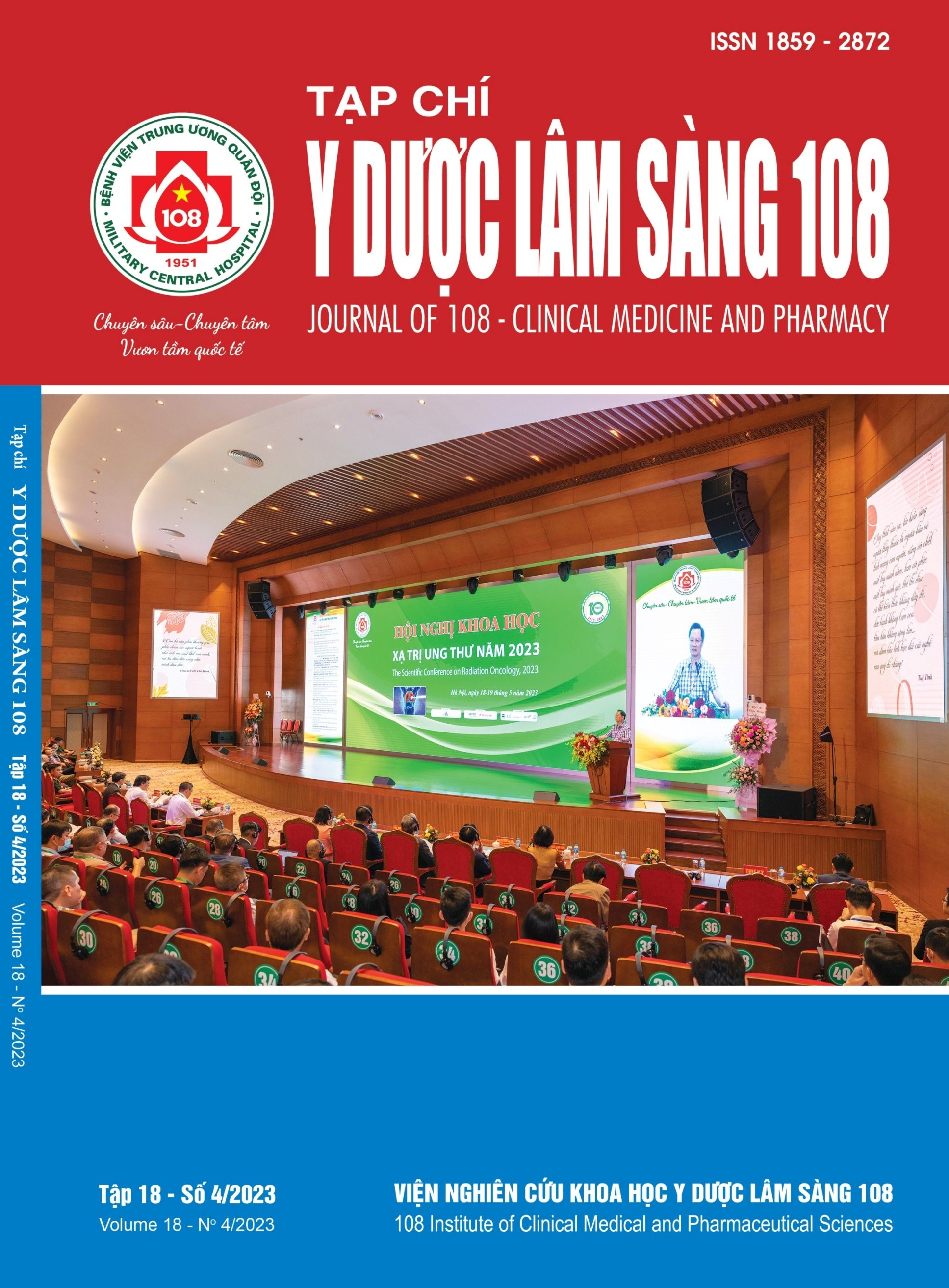Evaluating the rate of patent foramen ovale on transesophageal echocardiography in patients with acute ischemic stroke
Main Article Content
Keywords
Abstract
Objective: To determine the rate of patent foramen ovale on transesophageal echocardiography in patients with acute ischemic stroke. Subject and method: The study was implemented according to the cross-sectional study on patients with acute ischemic stroke who were implemented transesophageal echocardiography at Thong Nhat Hospital from June 2019 to February 2022. Result: A total of 400 patients with acute ischemic stroke met the inclusion criteria and were included in the study. The average age of the study population was 65.9 ± 12.1 years old, of which there were 286 patients (71.5%) ≥ 60 years old and 247 men patients (61.8%). The rate of the patent foramen ovale in the study was 27 patients (6.7%). There were no differences in age, sex, medical history, transthoracic and esophageal echocardiography, and brain magnetic resonance imaging between the two groups with and without patent foramen ovale. Conclusion: We found 6.7% of patients with acute ischemic stroke having patent foramen ovale detected on transesophageal echocardiography.
Article Details
References
2. Bayar N, Arslan Ş, Çağırcı G, Erkal Z, Üreyen ÇM, Çay S et al (2015) Assessment of morphology of patent foramen ovale with transesophageal echocardiography in symptomatic and asymptomatic patients. Journal of Stroke and Cerebrovascular Diseases 24(6): 1282-1286.
3. Overell J, Bone I, Lees K (2000) Interatrial septal abnormalities and stroke: A meta-analysis of case-control studies. Neurology 55(8): 1172-1179.
4. Silvestry FE, Cohen MS, Armsby LB, Burkule NJ, Fleishman CE, Hijazi ZM et al (2015) Guidelines for the echocardiographic assessment of atrial septal defect and patent foramen ovale: from the American Society of Echocardiography and Society for Cardiac Angiography and Interventions. Journal of the American Society of Echocardiography 28(8): 910-958.
5. Strong K, Mathers C, Bonita R (2007) Preventing stroke: Saving lives around the world. The Lancet Neurology 6(2): 182-187.
6. Furlan AJ, Reisman M, Massaro J, Mauri L, Adams H, Albers GW et al (2012) Closure or medical therapy for cryptogenic stroke with patent foramen ovale. New England Journal of Medicine. 366(11): 991-999.
7. Lee PH, Song J-K, Kim JS, Heo R, Lee S, Kim DH et al (2018) Cryptogenic stroke and high-risk patent foramen ovale: The DEFENSE-PFO trial. Journal of the American College of Cardiology 71(20): 2335-2342.
8. Mas JL, Derumeaux G, Guillon B, Massardier E, Hosseini H, Mechtouff L et al (2017) Patent foramen ovale closure or anticoagulation vs. antiplatelets after stroke. New England Journal of Medicine 377(11): 1011-1021.
9. Søndergaard L, Kasner SE, Rhodes JF, Andersen G, Iversen HK, Nielsen-Kudsk JE et al (2017) Patent foramen ovale closure or antiplatelet therapy for cryptogenic stroke. New England Journal of Medicine 377(11): 1033-1042.
10. Maffè S, Dellavesa P, Zenone F, Paino AM, Paffoni P, Perucca A et al (2010) Transthoracic second harmonic two-and three-dimensional echocardiography for detection of patent foramen ovale. European Journal of Echocardiography. 11(1): 57-63.
 ISSN: 1859 - 2872
ISSN: 1859 - 2872
